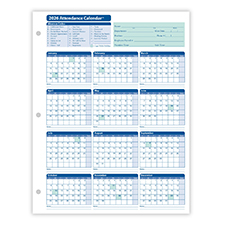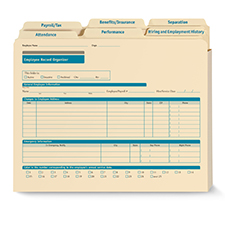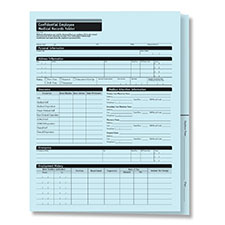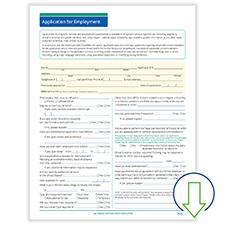
It’s 40 minutes into an employee’s shift and he’s nowhere to be found. Worse yet, you haven’t heard from him about coming in late or having a problem. It looks as if you have a violation of your work attendance policy on your hands. Now what?
To address all-too-common situations like this, you first need a clear employee handbook attendance policy to reference. From there, you can take certain actions to enforce your policy and, ultimately, keep unexcused absences from undermining your business.
Here’s how to manage troublesome attendance issues fairly and effectively:
- Create a Framework with a Written Attendance Policy
A written work attendance policy is the foundation of any solid attendance management strategy. Whether it’s a stand-alone document or part of your employee handbook, your attendance policy should cover work hours, and start and finish times. It should also explain the notification and reporting procedures if an employee is going to be late or absent due to illness or other circumstances.
- Keep It Consistent
To avoid conflict and cries of “unfair,” it’s important that you enforce your employee handbook attendance policy consistently. Beyond putting guidelines in writing, it’s about treating employees — and violations — similarly. Never reprimand an employee for abusing the company’s attendance policy when other employees have done the same thing without consequence. If you speak to Jim about being 10 minutes late every day, you need to speak to the frequently late Jane, too.
- Make an Impact with Documentation
Before you can address continued, unexcused absences, you need thorough documentation. After an initial verbal warning with the employee, a formal written notice allows you to capture the details surrounding the problem, as well as inform the employee of the consequences if the problem continues. As with other disciplinary documentation, it also helps you defend your position if any legal disputes arise regarding your employment decisions.
- Stick to the Facts
Be specific and factual with your documentation. For example, it is not enough to indicate that an employee is “excessively tardy.” Instead, the documentation should list every date the employee was late (and how late), the excuse provided and any other relevant details about each incident. Don’t exaggerate or embellish, either, with your written entries. Using words like “always” and “never” can harm your credibility down the road.
- Be Aware of Applicable Federal and State Laws
Don’t rely solely on your company’s time-off policy when determining whether to excuse an absence. There are several laws — from the Family and Medical Leave Act (FMLA) to the Americans with Disabilities Act (ADA) — that may kick in when an employee misses work. Employees may be entitled to paid or unpaid leave beyond what company policy allows.
- Choose the Appropriate Disciplinary Action
Company policy will dictate the appropriate disciplinary action for a particular offense. Examples of disciplinary actions: verbal warning, written warning, final warning, suspension with or without pay, demotion, cut in pay, probation or termination. Make sure your actions are consistent with company standards (such as how many personal days are permitted or how tardiness is handled), as well as “past practice” (how management has approached similar situations in the past).
When employees violate “no-call/no-show” rules without a reasonable explanation, promptly discuss the issue with them — and if it’s a pattern, issue a written warning.
- Remove Emotion When Disciplining Employees
Disciplinary decisions never should be made impulsively or hastily. If necessary, step away from the situation and postpone meeting with the employee until your emotions are under control. Always take time to consider all the facts and circumstances before making any adverse employment decision or confronting an employee.
- Share Your Documentation to Support Your Position
The tone of a disciplinary meeting should not be adversarial. Keep your comments non-threatening and work-related — and focus on the facts when reviewing the employee’s pattern of absences and/or tardiness. Consider, too, showing the employee a report or document indicating the pattern or frequency of his/her absences or tardiness. Employees are often surprised to see how a few incidents here and there can add up; the impact of seeing it in writing can be significant.
- Take the Next Step If an Employee Refuses to Sign a Disciplinary Write-Up
At any disciplinary meeting, provide a formal write-up, such as a warning notice, absence report or termination notice. After reviewing the document with the employee, ask him/her to sign it to acknowledge the document was presented and discussed. If the employee refuses to sign the document, ask another manager to witness it being presented to the employee, make a notation to that point and have the other manager sign the paperwork.
Manage Employee Time and Attendance with Downloadable Forms
When you need access to the most up-to-date, legally compliant forms to track time and attendance in the workplace, rely on the Fill-and-Save ™ HR Form Library: Time and Attendance. This collection includes attorney-reviewed, 100% compliant time and attendance forms, such as the best-selling Attendance Calendar, Time Off Request, Absence Report and Weekly Time Tracker. You can send and store forms electronically for a paperless workflow — or print out copies for your personnel files.
Related Content:
Clarifying Employer Rights During the Coronavirus Pandemic
Considering an Unlimited PTO Policy? Carefully Weigh the Pros and Cons





 Shopping cart
Shopping cart





